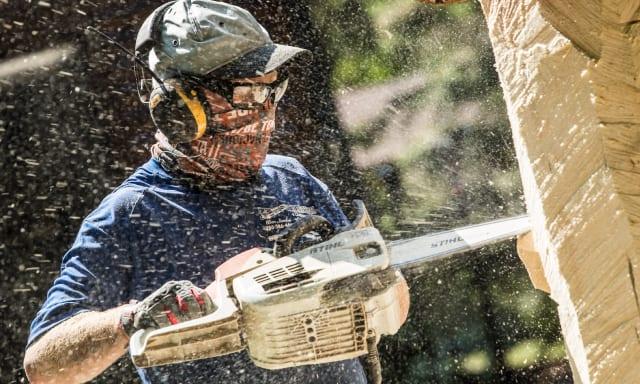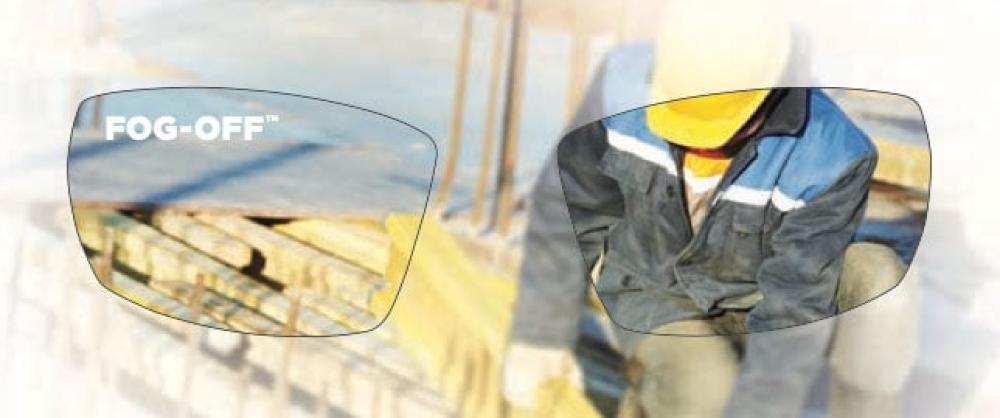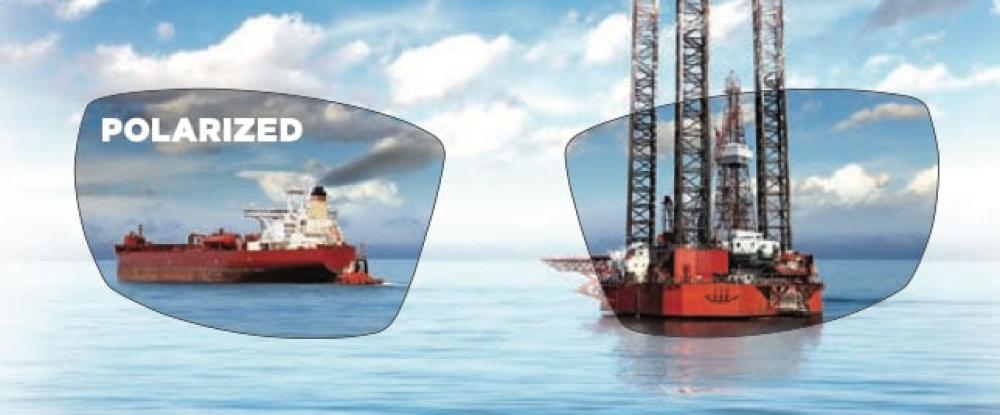How to Increase Eye Protection in the Workplace: Identify Risks, Squash Complaints & Choose Wisely

One of the most common incidents on jobsites, an average of 2,000 U.S. workers suffer eye injuries requiring medical treatment each day with 100 resulting in missed workdays for recovery. These injuries cost more than $300 million per year in lost production time, medical expenses and worker’s compensation — not to mention potentially lifelong consequences for the worker.
Considering safety glasses are mandated on a majority of worksites, those numbers are pretty staggering.
So, why is it that workers willingly put their eyeballs at risk by foregoing protective eyewear? We blame low-quality specs. Safety glasses lacking in comfort, performance and style tend to find their way off of workers’ faces, leaving them susceptible to all sorts of injuries. Educating site managers and workers on how to choose the right pair of eyewear is critical for creating a culture of compliance.
IDENTIFYING WORKPLACE HAZARDS
The first step to proper workplace eye safety is identifying potential dangers. Safety hazards to eyes include (but aren’t limited to):
- Flying Objects: If a task requires cutting, chipping, or grinding, eyes will be exposed to potentially harmful airborne objects.
- Dust: Whether kicked up by wind or work, dusty worksites can be a real nuisance. Wear snug-fitting construction safety glasses and employ engineering controls like guards or wet-cutting methods for extra eye protection.
- Ultraviolet (UV) Light: Exposure to bright ultraviolet (UV) light can inflame the cornea, causing welder’s flash. Flash burns are like sunburn in the eye and, left untreated, can become infected and cause vision loss. Workers near welders should wear special screens or shaded lenses to block the flash. If welding, wear specialized welding helmets with rated lenses.
- Sunlight: In addition to the havoc it can wreak on your skin, sun exposure can also do a number on the eyes. Outdoor workers should opt for UV safety glasses with UV-resistant lenses.
- Chemicals: Workers using chemicals should wear a snug pair of protective goggles and/or a combination of a face shield and protective eyewear, and consult the chemical’s Safety Data Sheet for the manufacturer’s specific PPE suggestions.
WHY WORKERS SKIP THE SPECS
Knowing the above risks, why do some workers ignore requirements and forgo eyewear? The three primary reasons eye protection glasses are tossed aside are size, style and performance.
- Size: No one wants to wear pants that don’t fit or shoes that dig into their feet — why should safety glasses be any different? Glasses that are either too loose or pinch are distracting. Glasses that fit will be more comfortable to wear and are more likely to be worn without constant monitoring.
- Style: No one likes to look silly, yet that’s exactly the look many traditional safety glasses deliver.
- Performance: Glasses with poor optical quality will certainly interfere with work. Pausing to constantly wipe off fog in humid environments can be a huge distraction, and scratches, glare and optical distortions can limit effective vision.
CHOOSING THE RIGHT PAIR OF SAFETY GLASSES
Keeping size, style and performance top of mind when purchasing safety glasses for yourself or your crew can be the difference between compliance and catastrophe.
HERE'S WHAT TO CONSIDER:
Size
Look for comfortable safety glasses with removable temples or a special system designed to accommodate accessories like elastic bands to keep them snug to your head. This is especially important when used in tandem with a removable foam gasket — a debris entry reducing option available on nicer safety glasses.
Style
Appearance and attractiveness are highly personal, subjective perspectives. If a different color frame or lens choice makes someone feel better about wearing safety glasses, it can turn safety glasses from something they have to wear to something they want to wear.
The real test is whether workers continue to wear the glasses in locations they technically aren’t required or if they remove them as soon as possible. This extends beyond the workplace to weekend activities that also pose eye injury hazards.
Performance
Higher quality protective eyewear exceeds safety minimums by offering productivity-enhancing features and upgrades, such as scratch-resistance, anti-fog technology and polarized lenses that filter UV rays. The best lenses offer many of these benefits at once to protect your vision.
Anti-Fog Lenses
Safety glasses that fog up — or more precisely, glasses exposed to condensation due to humidity or rapid changes in air temperature — are frustrating enough that a 2009 Occupational Health and Safety (OHS) study cited it as the primary reason workers refuse to wear work safety glasses. Fogging causes workers to frequently remove eyewear to wipe it dry or, even worse, stop wearing it entirely. Safety eyewear with anti-fog technology can significantly decrease injuries by providing the worker with a consistently clear view. But, not all anti-fog technologies are created equal. Many anti-fog safety glasses feature topical coatings to the lens’ surface. These have a limited life span and can wash off after a brief time worn. Anti-fog treatments that are permanently bonded (i.e., inherent) will not wash or wear off after long-term use, even in extreme temperatures.

UV-Resistant Lenses
Outdoor work presents an added risk of sun damage to eyes, and these workers should choose safety glasses that also provide UV protection. According to the American Optometric Association (AOA), UV-protection sunglasses should block 99-100 percent of UVA/UVB rays, screen 75-90 percent of light and wrap around the head for maximum protection from all angles. The top safety eyewear lenses on the market are made of polycarbonate materials covered with a scratch-resistant coating that filter out 99.9% of harmful UV rays. There are a wide range of tints available, including transition lenses that automatically adjust from dark to clear based on light conditions.
Polarized Lenses
Sources of glare like water, roadways or other shiny surfaces can make life difficult for anyone, particularly those with sensitive eyes or migraine susceptibility. That’s why polarized safety glasses have become increasingly popular for traditional sunglasses as well as protective eyewear. A special filter blocks this type of intense reflected light, reducing glare by allowing only direct light to enter the field of vision — leaving eyes feeling more comfortable and rested.
Scratch-Resistant Lenses
No glasses lens is ever fully scratch-proof. Safety glasses treated with a durable hard coat will be more resistant to knicks and scratches. However, it’s important to note that most safety glasses prioritize impact absorption over scratch-resistance and are therefore made with a slightly softer material.

ANSI-Compliant Glasses
Look for z87 safety glasses marked with ANSI Z87.1 Performance Standard compliance (tested for impact and coverage) or Z87+ (tested for high impact). Some glasses are also tested to a more rigid U.S. Military impact test, though there is no specific marking required for this. Look for MIL impact glasses to be called out on packaging or in marketing materials.
Safe Storage
This is on you. The lifespan of any piece of safety gear can typically be extended by taking good care of it. Regularly clean your safety glasses with a microfiber cloth and store them in a sturdy case when not in use.
A CULTURE THAT CARES: MAKING EYE SAFETY A PRIORITY ON WORKSITES
A strong safety culture is more than pithy slogans on worksite posters. It requires members of management to model the practices they expect from line employees, including the same quality PPE that they wear. Rather than only considering the cost to achieve minimal compliance, management should consider the financial impact of injuries that occur when workers toss low quality PPE aside. Going beyond the minimum is an investment in the workforce and demonstrates a commitment to quality, safety and the value of individual workers.

The personal part of PPE is key. Consider the difference in attitudes toward disposable, single-use visitor glasses and a pair of high-quality, cool safety glasses issued to an employee with a case, lanyard and cleaning accessories. Most workers will appreciate the difference and understand their responsibility to maintain them.
We’re firm believers that cool drives compliance. When safety glasses are both stylish and safe, workers look good, feel good and remain protected. From workday to weekend, they wear them because they want to. Whether you’re buying for yourself or the whole crew, choose protective eyewear that accomplishes both comfort and compliance — because happy hour is a hell of a lot more fun than the emergency room.


